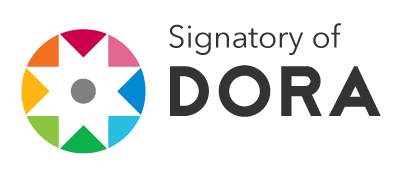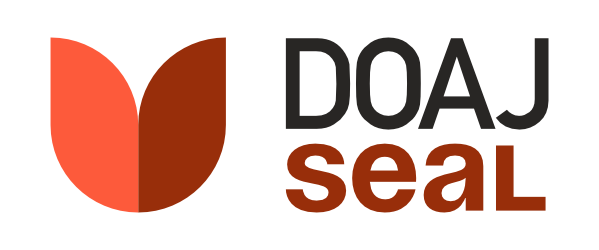Full-text of the article is available for this language: Español.
Digital marketing of commercial infant formula in Argentina: a digital ethnographic study
Received:
21 December 2023,
Accepted:
9 April 2024,
Published:
23 April 2024

Abstract
Although evidence of the benefits of breastfeeding is widespread, there are several challenges to initiate and sustain it. Infant formula companies use marketing strategies that violate existing regulations, contributing to its early abandonment. We explore the digital marketing exposure of infant formulas in Argentina by analyzing people’s interactions with brands and the traces of these interactions in conversations engaged in Facebook groups during 2022, from a qualitative approach based on digital ethnography. Results show that companies deploy regulatory avoidance tactics and seek contact with mothers. Users do not interact with the accounts but are exposed to their strategies given the correlation between product attributes present in advertising with their motivations and aspirations. The mediators between marketing and mothers are medical professionals, used as marketing resources. We conclude that authorities should promote new agreements on the practices of medical professionals and develop regulations taking into account digital environments.
Keywords: Breast-Milk Substitutes, Infant Formula, Marketing, Qualitative Research, Social Networking, Argentina
Categories: Feeding
Funding: UNICEF
References
1. Victora C, Bahl R, Barros AJD, França GVA, Horton S, Krasevec J, et al. Breastfeeding in the 21st century: epidemiology, mechanisms, and lifelong effect. The Lancet. 2016;387(10017):475-490.
Crossref
| PubMed
| Google Scholar
2. Rollins N, Piwoz E, Baker P, Kingston G, Mabaso KM, McCoy D, et al. Marketing of commercial milk formula: a system to capture parents, communities, science, and policy. The Lancet. 2023;401(10375):486-502.
Crossref
| PubMed
| Google Scholar
3. Pérez Escamilla R, Tomori C, Hernández Cordero S, Baker P, Barrios A, Bégin F, et al. Breastfeeding: crucially important, but increasingly challenged in a market-driven world. The Lancet. 2023;401(10375):472-485.
Crossref
| PubMed
| Google Scholar
4. World Health Organization. Essential nutrition actions: Improving maternal, newborn, infant and young child health and nutrition. Geneva: WHO; 2013.
5. Harris J, Pomeranz J. Infant formula and toddler milk marketing: opportunities to address harmful practices and improve young children’s diets. Nutrition Reviews. 2020;78(10):866–883.
Crossref
| PubMed
| Google Scholar
6. Vallone F. Pequeños grandes clientes: La publicidad de sucedáneos de la leche materna en dos revistas pediátricas de Argentina entre 1977 y 2006. Salud Colectiva. 2009:5(1):87-105.
Crossref
| Google Scholar
7. Rollins N, Bhandari N, Hajeebhoy N, Horton S, Lutter CK, Martines JC, et al. Why invest, and what it will take to improve breastfeeding practices? The Lancet. 2016;387(10017):491-204.
Crossref
| PubMed
| Google Scholar
8. Cheung K, Petrou L, Helfer B, Porubayeva E, Dolgikh E, Ali S, et al. Health and nutrition claims for infant formula: international cross-sectional survey. BMJ. 2023;380:e071075.
Crossref
| PubMed
| Google Scholar
9. Marshall J, Godfrey M, Renfrew M. Being a ‘good mother’: Managing breastfeeding and merging identities. Social Science & Medicine. 2007;65(10):2147-2159.
Crossref
| PubMed
| Google Scholar
10. Baker P, Smith J, Garde A, Grummer-Strawn L, Wood B, Sen G et al. The political economy of infant and young child feeding: confronting corporate power, overcoming structural barriers, and accelerating progress. The Lancet. 2023;401(10375):503-524.
Crossref
| PubMed
| Google Scholar
11. Murphy E. ‘Breast is best’: Infant feeding decisions and maternal deviance. Sociology of Health & Illness. 1999;21(2):187-208.
Crossref
| Google Scholar
12. Giordani RCF, Piccoli D, Bezerra I, Almeida CCB. Maternidade e amamentação: identidade, corpo e gênero. Ciência & Saúde Coletiva. 2018;23(8):2731-2739.
Crossref
| PubMed
| Google Scholar
13. Maidana RE, Ojeda N, Vera R, Campeero M, Scavuzzo C. Representaciones sociales respecto a la lactancia humana en aquellas mujeres-madres que decidieron interrumpir la lactancia. Revista de Salud Pública. 2023;29(2):1-10.
Crossref
| Google Scholar
14. Martínez-Plascencia U, Rangel-Flores YY, Rodríguez-Martínez ME. ¿Lactancia materna o en pareja?: Un estudio sobre las experiencias de reconfiguración de cuerpos, roles y cotidianeidades en madres y padres mexicanos. Cadernos de Saúde Pública. 2017;33(9): e00109616.
Crossref
| PubMed
| Google Scholar
15. Esteban ML. La maternidad como cultura: Algunas cuestiones sobre lactancia materna. En: Perdiguero E, Comelles JM, eds. Medicina y cultura: Estudios entre antropología y medicina. Barcelona: Bellaterra; 2000. p. 207-226.
16. Gutiérrez Martínez AP. ¿Y tú, das pecho o biberón?: Narrativas, identidad de género y lactancia materna. Desacatos. 2020;23(63):104-121.
Crossref
| Google Scholar
17. Lupton D. Food, the body and the self. California: SAGE; 1996.
18. Becker G, Zambrano P, Ching C, Cashin J, Burns A, Policarpo E, et al. Global evidence of persistent violations of the International Code of Marketing of Breast-milk Substitutes: A systematic scoping review. Maternal & Child Nutrition. 2022;18(Supl 3):e13335.
Crossref
| PubMed
| Google Scholar
19. Hernández-Cordero S, Vilar-Compte M, Castañeda-Márquez A, et al. Exposure to marketing of breastmilk substitutes in Mexican women: Sources and scope. International Breastfeeding Journal. 2020;17:16.
Crossref
| PubMed
| Google Scholar
20. Instituto Nacional de Salud Pública, Fondo de las Naciones Unidas para la Infancia. Publicidad digital de sucedáneos de la leche materna, alimentos y bebidas para niños y niñas menores de dos años en México. México: INSP, UNICEF; 2021.
21. Hastings G, Angus K, Douglas, Hunt K. Selling second best: how infant formula marketing Works. Globalization and Health. 2020;16:77.
Crossref
| PubMed
| Google Scholar
22. World Health Organization, The United Nations Children’s Fund. How the marketing of formula milk influences our decisions on infant feeding. Washington: WHO-UNICEF; 2022.
23. Marins B, Araújo I, Jacob SC. A propaganda de alimentos: orientação, ou apenas estímulo ao consumo? Ciência & Saúde Coletiva. 2011;16(9):3873-3882.
Crossref
| PubMed
| Google Scholar
24. Pereira-Kotze C, Doherty T, Swart C. Uso de plataformas de redes sociales por parte de los fabricantes para comercializar sucedáneos de la leche materna en Sudáfrica. BMJ Global Health. 2020;5(12):e003574.
25. Duffy E, Taillie L, Richter A, Higgins ICA, Harris JL, Hall MG, et al. Parental perceptions and exposure to advertising of toddler milk: A pilot study with Latino parents. International Journal of Environmental Research & Public Health. 2021;18(2):528.
Crossref
| PubMed
| Google Scholar
26. World Health Organization. Scope and impact of digital marketing strategies for promoting breastmilk substitutes. Washington: WHO; 2022.
27. Horwood C, Luthuli S, Pereira-Kotze C, et al. An exploration of pregnant women and mothers’ attitudes, perceptions and experiences of formula feeding and formula marketing, and the factors that influence decision-making about infant feeding in South Africa. BMC Public Health. 2022;22:393.
Crossref
| PubMed
| Google Scholar
28. Boczkowski P, Mitchelstein E. El entorno digital. Buenos Aires: Siglo XXI Editores; 2023.
29. Piaggio L, Nuñez B, Porras I, Guma F. Formula for deception: Corporate violations and state negligence; labelling and advertising in breast-milk substitutes in Argentina. World Nutrition. 2023;14(2):13-32.
Crossref
| Google Scholar
30. Mangialavori G, Della Rosa G, Finkelstein J. Cumplimiento del Código Internacional de Comercialización de Sucedáneos de la Leche Materna en localidades seleccionadas de la Ciudad Autónoma de Buenos Aires y el Conurbano Bonaerense. ReDSal. 2022;1(1):11–17.
Crossref
| Google Scholar
31. Jones A, Bhaumik S, Morelli G, Zhao J, Hendry M, Grummer-Strawn L, et al. Digital marketing of breast-milk substitutes: a systematic scoping review. Current Nutrition Reports. 2022;11(3):416-430.
Crossref
| PubMed
| Google Scholar
32. World Health Organization. Monitoring and restricting digital marketing of unhealthy products to children and adolescents. Moscú: WHO; 2018.
33. Fondo de las Naciones Unidas para la Infancia, Centro de Estudios en Nutrición Infantil. Marketing digital de sucedáneos de leche materna en la Argentina. CABA: UNICEF; 2023.
34. Lupton D. Communicating heatlh: the Mass Media and Advertising in health promotion. En: The imperative of health. Public health and the regulated body. London: SAGE; 1995. p. 106-130.
Crossref
| Google Scholar
35. Hine C. Etnografía virtual. Barcelona: UOC; 2004.
36. Ministerio de Cultura. Encuesta nacional de consumos culturales 2013/2023 [Internet]. 2023 [citado 10 jun 2023] Disponible en: https://tinyurl.com/bdhrx6c2.
37. Cabral CS, Cavalcanti DS, Barbosa JM, Vasconcelos ACCP, Vianna RPT. Inserção de um grupo virtual na rede social de apoio ao aleitamento materno exclusivo de mulheres após a alta hospitalar. Interface. 2020; 24:e190688.
Crossref
| Google Scholar
38. Martínez Salgado C. El muestreo en investigación cualitativa: Principios básicos y algunas controversias. Ciência & Saúde Coletiva. 2012;17(3):613-619.
Crossref
| PubMed
| Google Scholar
39. Canton C, Baston C, Álvarez Gatti P, Vecchiarelli C, Osio C. Perspectivas y valoración de la lactancia en los padres varones de una maternidad privada de la Ciudad Autónoma de Buenos Aires: Investigación cualitativa. Archivos Argentinos de Pediatría. 2022;120(3):187-194.
Crossref
| Google Scholar
40. Ladino L, Sánchez N, Vázquez-Frias R, Koletzko B. Latin American considerations for infant and young child formulae. Nutrients. 2021;13:3942.
Crossref
| PubMed
| Google Scholar
41. Muñoz-Zapata D, Marín-Ochoa B, Ariza-Sosa G. Maternidades contemporáneas: tribus digitales e interacciones con las instituciones de salud. Interface. 2020;25:200051.
Crossref
| Google Scholar
42. Lara-Mejía V, Franco-Lares B, Lozada-Tequeanes A, Villanueva-Vázquez C, Hernández-Cordero S. Methodologies for monitoring the digital marketing of foods and beverages aimed at infants, children, and adolescents (ICA): A scoping review. International Journal of Environmental Research and Public Health. 2022;19(15):8951.
Crossref
| PubMed
| Google Scholar










